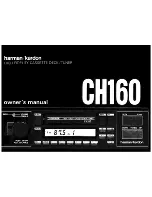
It is important to check that the brake band (6) is running flat on the brake lining and
not biting on the upper or lower edge. Adjust alignment of brake band by slightly
pivoting it in the rivets if required.
Correct tension for spring 7 is obtained when 160-220 grams applied as a tangent
force to a 10 cm diam (spool and tape) causes the spool to move. See fig. 3.
Brake tension may be altered by resetting the brake return spring (7) into any of
the three holes on the end-brackets (5 and 9). The brake release solenoid must cause
sufficient movement (approx. 3 mm) of the front-end bracket (9) to fully free the
brake band from the lining.
Depress the “stop” and “play” buttons simultaneously to energize the brake release
solenoid. If the movement is incorrect, loosen the nuts (10) and re-position the
solenoid. The front-end brackets of the brake bands may be bent to achieve
simultaneous release of both brakes.
The brakes should be kept clean and dry. Do not use any oil or grease on the linings.
2.1.3 Tape tension
Back tension is applied by the combination of reverse direction torque from the feed
motor and the degree of wrap around on the LH guide pin. Wear on the mechanical
parts of the recorder will not alter the amount of tape tension. Any effects that could
be attributed to inaccurate tape tension may be caused by:
a. Faulty adjustment of the brake band
b. Electrical fault in feed motor
c. Electrical fault in phase shift-condenser
(C 72 pos. 22 in fig. 5 and 6).
Содержание G 36
Страница 1: ......
Страница 6: ......
Страница 12: ......
Страница 26: ...6 Circuit Diagram ...
Страница 27: ......
Страница 28: ......
Страница 29: ......
Страница 32: ......
Страница 33: ......
Страница 34: ......
Страница 35: ......
Страница 36: ......
Страница 37: ......
Страница 38: ......
Страница 45: ...INDEX ORDER N PART DESCRIPTION SERIES Qu Ind III I II III D Head Support Block ...
Страница 50: ......

























